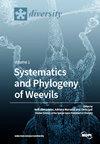Invasion of Bythotrephes longimanus and Cercopagis pengoi in Lake Champlain: Impacts on the Native Zooplankton Community
IF 2.1
3区 生物学
Q2 BIODIVERSITY CONSERVATION
引用次数: 0
Abstract
The zooplankton community of Lake Champlain has been altered over the past decade due to the introduction of two predatory zooplankton species. Bythotrephes longimanus Leydig, 1860 was first detected in Lake Champlain in August 2014, and Cercopagis pengoi (Ostroumov, 1891) was detected in August 2018. Monitoring for both invasive species at 15 lake sites using whole water tow sampling has been ongoing since 2010 with no detection of either species until 2014. Utilizing data from the Lake Champlain long-term monitoring program, we assessed pre- and post-invasion population dynamics of both invasive species on the native zooplankton community. Our results showed shifts in community structure following invasion, including a reduction in Diacyclops thomasi (Forbes, 1882) populations by both invaders and a reduction in Daphnia retrocurva Forbes, 1882 following the introduction of B. longimanus. Other cyclopoids, bosminids, and rotifers were also reduced, corresponding to both introduced species. The native large-bodied plankton predator Leptodora kindtii (Focke, 1844) appears to be unable to coexist with either invasive predatory cladoceran, displaying seasonal partitioning between L. kindtii and the Cercopagidae. These findings suggest that the invasion of both large predators in Lake Champlain have impacted pelagic zooplankton community structure.尚普兰湖龙氏弯螺旋藻和彭氏弯尾藻入侵对本地浮游动物群落的影响
近十年来,由于两种掠食性浮游动物的引入,尚普兰湖的浮游动物群落发生了变化。2014年8月在尚普伦湖首次发现Bythotrephes longimanus Leydig, 1860, 2018年8月在尚普伦湖首次发现Cercopagis pengoi (Ostroumov, 1891)。自2010年以来,在15个湖泊站点使用全水拖取样对这两种入侵物种进行监测,直到2014年才发现这两种物种。利用尚普兰湖长期监测项目的数据,我们评估了两种入侵物种入侵前和入侵后对本地浮游动物群落的种群动态。我们的研究结果表明,入侵后群落结构发生了变化,包括两种入侵者都减少了Diacyclops tomasi (Forbes, 1882)的种群数量,而引入B. longimanus后,水蚤(Daphnia retrocurva Forbes, 1882)的种群数量减少。其他的cyclopoids, bominids和轮虫也减少了,与这两个引进物种相对应。本地大型浮游生物捕食者Leptodora kindtii (Focke, 1844)似乎无法与入侵的掠食性枝海动物共存,在L. kindtii和Cercopagidae之间表现出季节性划分。这些发现表明,这两种大型捕食者的入侵影响了尚普兰湖的浮游动物群落结构。
本文章由计算机程序翻译,如有差异,请以英文原文为准。
求助全文
约1分钟内获得全文
求助全文
来源期刊

Diversity-Basel
Environmental Science-Ecological Modeling
CiteScore
3.40
自引率
12.50%
发文量
925
审稿时长
11 weeks
期刊介绍:
Diversity (ISSN 1424-2818) is an international and interdisciplinary journal of science concerning diversity concept and application, diversity assessment and diversity preservation. It is focused on organismic and molecular diversity. It publishes reviews, regular research papers and short notes in the regular issues. Related news and announcements are also published. Our aim is to encourage scientists to publish their experimental and theoretical results in as much detail as possible. Therefore, there is no restriction on the length of the papers. Full experimental details must be provided so that the results can be reproduced.
 求助内容:
求助内容: 应助结果提醒方式:
应助结果提醒方式:


